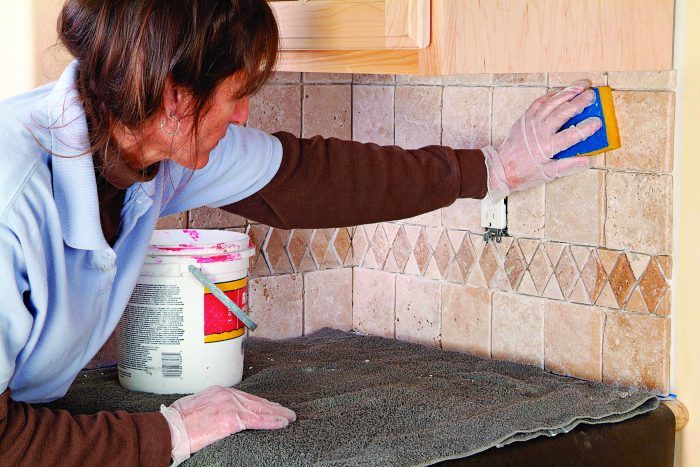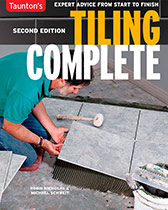
Natural stone does not have a glazed surface and is so porous that it must be sealed before grouting to prevent the grout from staining the stone (the exception is if you wish to fill the porous stone’s cavities).
Sealing stone also prevents the grout from filling every pore of the tile’s surface, saving you hours of grief from having to scrub down the tiles after grouting.
You can use the same sealer that you’d use to seal other porous tiles or products specially made for stone. For best results, you should seal natural stone tiles twice: The first coat, applied before grouting, provides protection from grout staining; the second coat, applied after grouting adds protection to both the grout and the tile. Apply both coats with a sponge, following the manufacturer’s directions on the particular sealer product you use.
Many stone tiles show their colors more intensely after being treated with a product called an enhancer. You can get an idea of what stone treated this way will look like by sponging a tile with water. Enhancer is applied after the installation is sealed and cured, usually after about 1 week. If you decide to use an enhancer, make sure to use a sealer made by the same manufacturer and follow their application instructions to the letter.
 Excerpted from Tiling Complete, 2nd Edition by Robin Nicholas and Michael Schweit.
Excerpted from Tiling Complete, 2nd Edition by Robin Nicholas and Michael Schweit.
Available in the Taunton Store and at Amazon.com.





